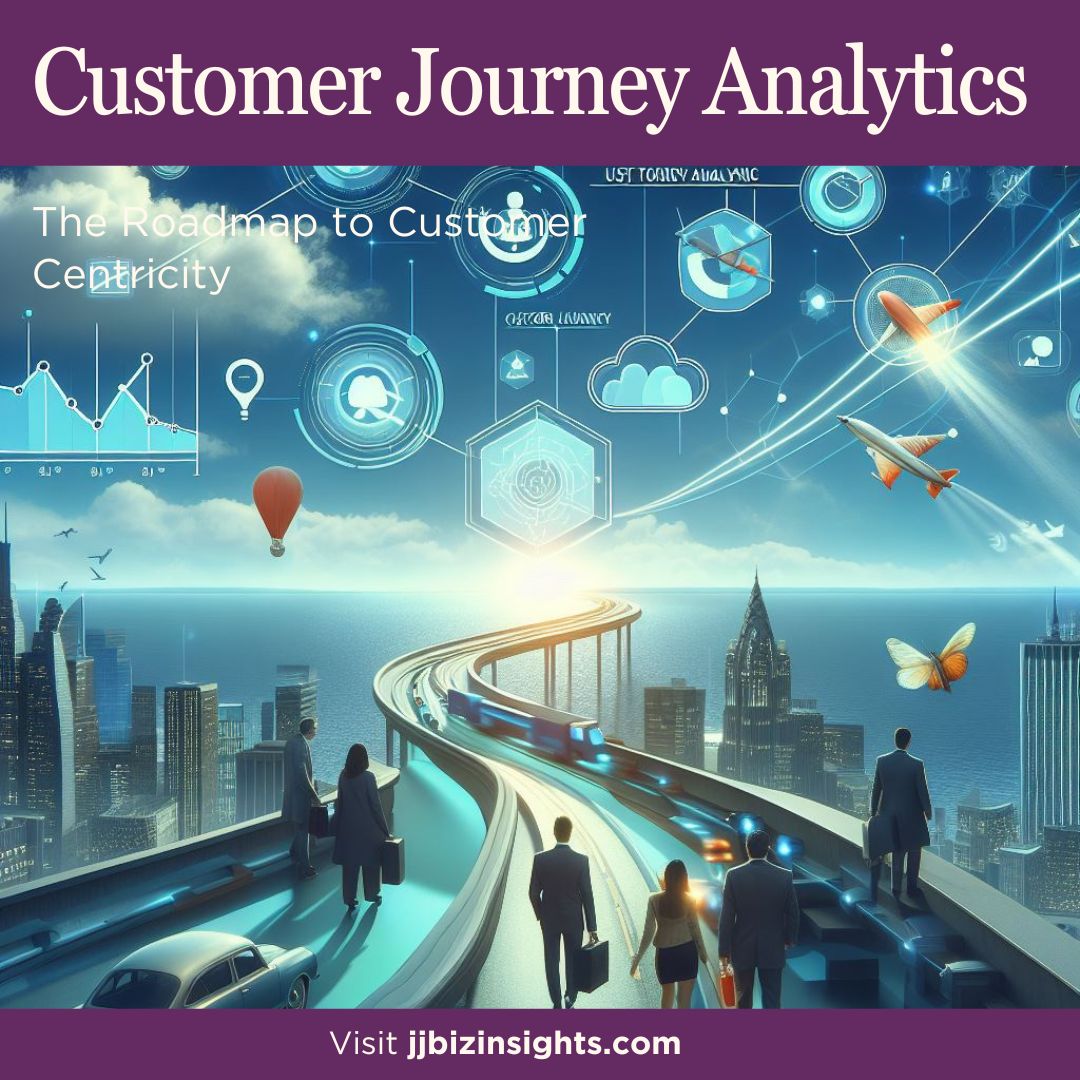
Customer Journey Analytics: The Roadmap to Customer Centricity
In today’s experience-driven economy, understanding your customer journey is no longer a luxury, it’s a necessity. Customer journey analytics empowers businesses to map, analyze, and optimize the entire customer experience – from initial brand awareness to post-purchase interactions. By harnessing the power of customer journey analytics, businesses can gain invaluable insights into customer behavior, identify areas for improvement, and ultimately drive customer loyalty and brand advocacy.
What is Customer Journey Analytics?

Customer journey analytics is the process of collecting, analyzing, and visualizing data across all touchpoints in the customer journey. This data can include website interactions, social media engagements, customer service communications, and purchase behavior.
By analyzing this data, businesses can gain a holistic understanding of how customers interact with their brand, identify pain points and roadblocks, and ultimately optimize the customer experience for maximum satisfaction.
Benefits of Customer Journey Analytics
Customer journey analytics offers a multitude of benefits for businesses, including:
- Improved Customer Satisfaction: By identifying pain points and friction in the customer journey, businesses can make targeted improvements to enhance customer satisfaction and reduce churn.
- Increased Conversion Rates: By understanding customer behavior at each stage of the journey, businesses can optimize conversion funnels and promote customer journey completion.
- Data-Driven Decision Making: Customer journey analytics provides valuable data insights to guide strategic business decisions related to marketing, product development, and customer service.
- Personalized Customer Experiences: By leveraging customer data, businesses can personalize the customer journey by tailoring content, recommendations, and support interactions.
- Enhanced Brand Loyalty: A seamless and customer-centric experience fosters brand loyalty and encourages repeat business and customer advocacy.
Key Components of Customer Journey Analytics
Customer journey analytics consists of several key components:
- Customer Journey Mapping: The foundation of customer journey analytics is a visual representation of the customer journey, outlining all touchpoints, interactions, and potential customer emotions at each stage.
- Data Collection: Customer journey analytics requires data collection from various sources, including website analytics, CRM systems, social media platforms, customer surveys, and feedback forms.
- Data Analysis: Once data is collected, it needs to be analyzed using data visualization tools and analytics platforms to identify trends, patterns, and areas for improvement.
- Taking Action: The insights gleaned from customer journey analytics should be translated into actionable strategies to optimize various aspects of the customer experience.
Best Practices for Customer Journey Analytics

Here are some best practices for implementing successful customer journey analytics:
- Define Your Customer Personas: Understand your target audience by creating detailed customer personas representing different customer segments and their unique needs.
- Identify Key Touchpoints: Map all touchpoints in the customer journey, from initial brand awareness to post-purchase interactions.
- Set Clear Goals: Outline specific goals for your customer journey analytics efforts, such as improving conversion rates or reducing customer churn.
- Choose the Right Tools: Invest in the right tools and technologies to collect, analyze, and visualize customer journey data.
- Focus on Continuous Improvement: Customer journey analytics is an ongoing process. Regularly analyze data, implement improvements, and measure results to continuously enhance the customer experience.
Demystifying the Customer Journey: Essential Tools for Analysis
Customer journey analysis empowers businesses to understand and optimize the customer experience across all touchpoints. Here’s an exploration of commonly used tools to unlock valuable insights:
1. Customer Data Platforms (CDPs):
- Function: CDPs act as central hubs, collecting and unifying customer data from numerous channels (website, CRM, social media) into a single, customer-centric profile.
- Use Case for Customer Journey Analytics: CDPs provide a holistic view of the customer journey by consolidating data, allowing businesses to analyze interactions across all touchpoints and identify patterns in customer behavior.
- SEO Optimization: Include relevant keywords like “customer data unification,” “customer touchpoint analysis,” and “holistic customer view.”
2. Customer Engagement Platforms (CEPs):
- Function: CEPs take customer journey analysis a step further. Think of them as CDPs with an extra layer of engagement muscle. They offer data analysis in addition to the ability to orchestrate targeted customer interactions throughout the journey (e.g., email campaigns, personalized offers).
- Use Case for Customer Journey Analytics: Beyond data analysis, CEPs empower businesses to proactively engage with customers at various stages of their journey, enhancing the overall experience.
- SEO Optimization: Include relevant keywords like “customer journey orchestration,” “proactive customer engagement,” and “personalized customer interactions.”
3. Attribution Tools:
- Function: Attribution tools lift the veil on the “why” behind customer actions. They analyze and attribute specific touchpoints (e.g., social media ad, website visit) to customer conversions (e.g., purchases, sign-ups).
- Use Case for Customer Journey Analytics: By understanding which touchpoints contribute most to desired outcomes (conversions), businesses can optimize their marketing efforts and resource allocation for maximum impact.
- SEO Optimization: Include relevant keywords like “customer conversion attribution,” “touchpoint analysis,” and “marketing campaign optimization.”
4. Behavioral Analytics Tools:
- Function: Dive deeper into customer behavior with these tools. They analyze how customers interact with your website or app, providing insights into navigation patterns, clicks, time spent on specific pages, and more.
- Use Case for Customer Journey Analytics: By identifying pain points (e.g., confusing navigation, high drop-off rates) within the customer journey, businesses can pinpoint areas for improvement and streamline the user experience.
- SEO Optimization: Include relevant keywords like “website user behavior analysis,” “customer journey pain points,” and “user experience optimization.”
5. Business Intelligence (BI) Tools:
- Function: BI tools go beyond just customer data. They offer a comprehensive view of overall business performance, including customer-related metrics (e.g., customer acquisition cost, customer lifetime value).
- Use Case for Customer Journey Analytics: BI tools empower businesses to analyze trends, visualize data in an insightful way, and make data-driven decisions to improve various aspects of the customer journey, ultimately enhancing customer satisfaction and loyalty.
- SEO Optimization: Include relevant keywords like “customer-centric business intelligence,” “data-driven customer experience decisions,” and “customer lifetime value analysis.”
Choosing the Right Tool:
The ideal toolset depends on your specific needs and customer journey complexity. Each tool has its strengths, and often, a combination provides the most comprehensive view.
Remember: Customer journey analytics is an ongoing process. Experiment with different tools, consistently analyze data, and iterate on your strategies to continuously improve customer experiences and drive long-term business success.
Source: Twilio segment, Qualtrics





